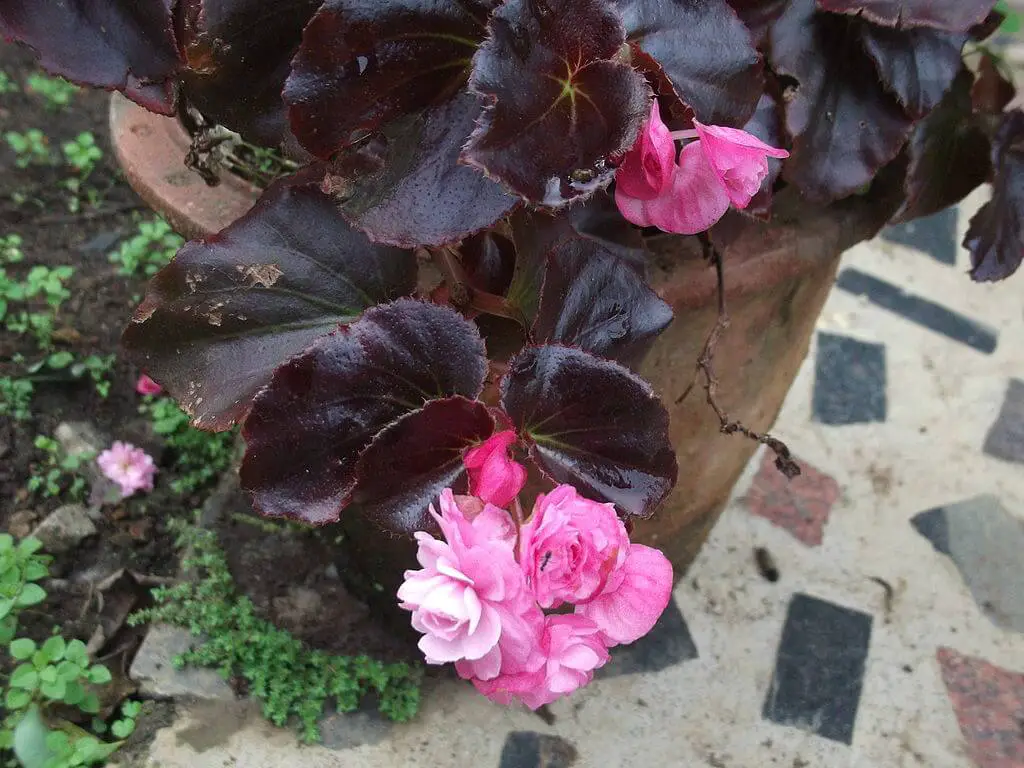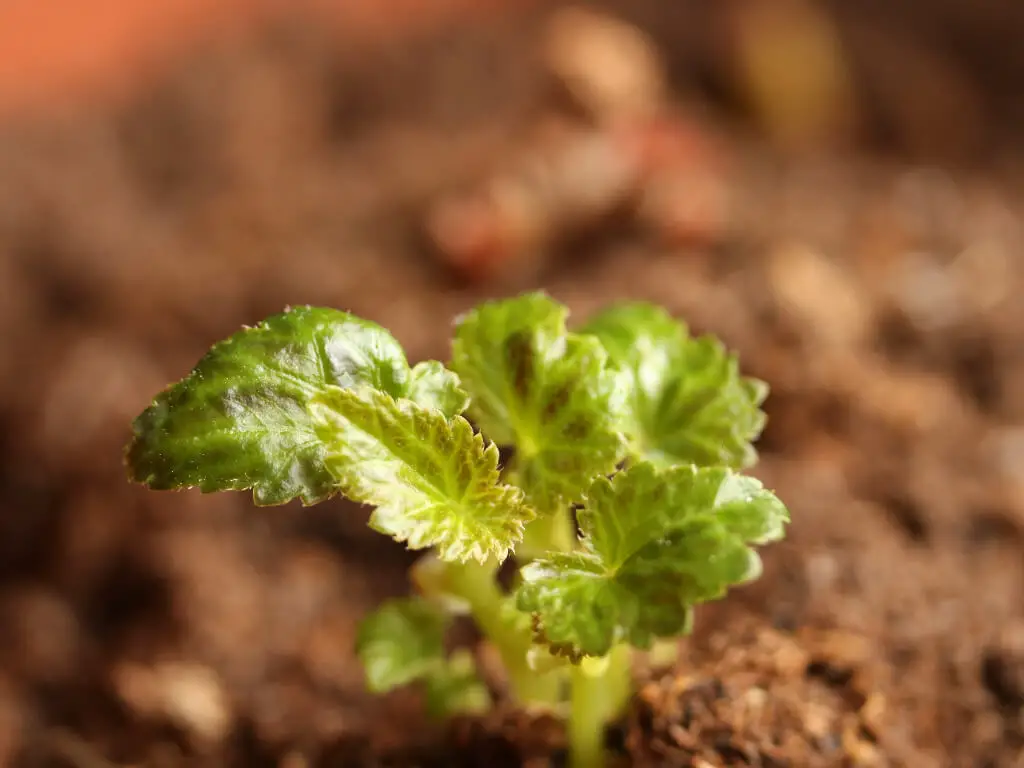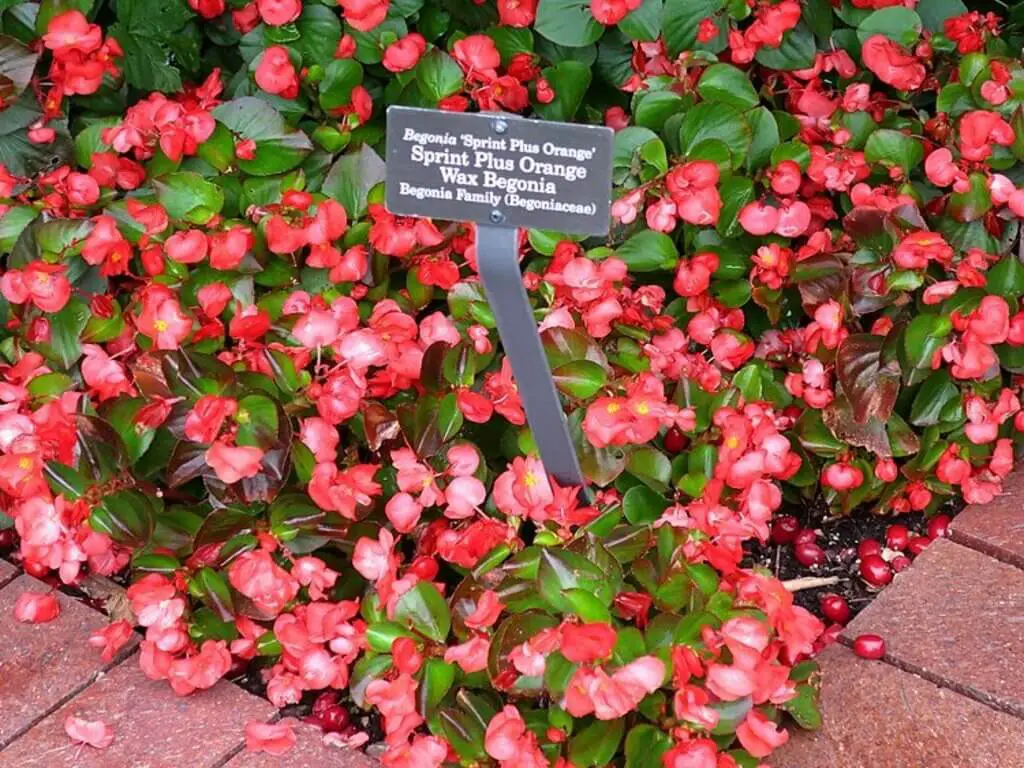How to Grow Wax Begonia
The Wax Begonia is one of the popular beautiful bedding plants. Since the Victorian age, people are growing and using these plants for decorations. These plants also have a few other names including fibrous begonia and begonia semperflorens
In general, these ever-blooming plants exhibit interesting durable characteristics. They also beautify the garden with their single or double fascinating blooms that are pink, red, or white in color.
This article primarily focuses on wax begonia, its propagation, caring, varieties, and uses.
Some people think of wax begonia as an old-fashioned outdoor plant. But in reality, these plants do serve as beautiful space fill-ups even in modern days. They can also be grown both indoors and outdoors.
Table of Contents
Characteristics

Photo by Yercaud-elango (Wikimedia Commons) (CC BY-SA 4.0)
Wax Begonia is indigenous to Brazil and its surrounding region. Hence, it grows as a winter-hardy perennial in USDA zones 10 and 11. In other USDA zones, gardeners grow them as annuals successfully.
These plants usually form small clumps at the base. They can grow 6 – 18 inches tall and spread 6 – 12 inches wide depending on the variety. Most types have greenish foliage. Some types have bronze-reddish leaves. You have the option of choosing any of them to beautify your spaces.
The waxy blooms are somehow related to melons and pumpkins. Interestingly, these edible flowers have a mild citrus flavor.
Usually, these plants require very low maintenance. You just need to deadhead the finished blooms and prune occasionally. In addition, these plants are known for their deer resistant capabilities too!
Toxicity
The Begonia species are toxic to animals. They can cause salivation, vomiting, or kidney function failure in animals. However, the roots are the most toxic parts of these plants. Other parts are somewhat less toxic compare to the roots.
Propagation

Photo by Zefram (Wikimedia Commons) (CC BY-SA 3.0)
Sunlight
If you live in cooler regions, grow wax begonia under full sun. Naturally, the bronze foliage varieties tend to grow more readily than green foliage varieties under full sun. You can grow them as annuals in these areas
However, if you live in warm regions, grow them in spaces that receive afternoon shades. You can grow them as perennials in these areas
Water
Maintain the soil moisture by watering at the base of the plants. Do not overwater. It may cause waterlogging. Like most plants, the wax begonia is susceptible to fungal diseases and root rots due to waterlogging.
Soil
Plant wax begonia in well-draining soils. Before planting, amend the soil with rich organic matter.
Temperature and Humidity
These plants prefer to grow in warm and humid areas. if the temperature is consistently above 60 degrees Fahrenheit, you can grow them as perennials. They serve as wonderful houseplants, particularly during winters, in warm regions.
If you are planning to grow them indoors, keep a tray filled with pebble stones underneath the planting pot. Then, fill the tray with water. Make sure the water is not seeping into the pot. The evaporating water helps to keep the environment around the plants humid.
If you happen to live in colder areas, where temperatures drop below 60 degrees Fahrenheit, you can grow these plants as annuals. In this scenario, you may miss the “winter advantage” of wax begonia.
From Seeds

Growing wax begonia from seeds can be tricky. Normally, the seeds are very tiny, just like dust particles. The germination period is also very long. In addition, this method requires serious attention to temperature, lighting conditions, and soil.
Due to the above constraints, most gardeners do not prefer this method. However, you can try your luck. You can purchase the seeds from online stores easily. We have detailed the propagation procedure below:
1.) Start sowing the seeds 3-4 months before the last frost. Just sprinkle the seeds in planting trays containing rich and well-draining soil.
2.) Cover the seeds with a thin layer of soil. They need light for germination.
3.) Maintain the soil moisture by watering as needed. Then, cover the setup with a humidity dome or plastic bag.
4.) Generally, these plants take a very long time to germinate. One of my neighbors had to wait more than 3 months! So, be patient till you get success.
5.) You can also try to speed up the process using heating mats or grow lights.
6.) When you see a set of true leaves, sprouting out, transplant them to containers. After that, harden off them before planting outside.
From Cuttings

Photo by cultivar413 (Wikimedia Commons) (CC BY 2.0)
Generally, this is the easiest method to propagate these plants. You can purchase seedlings from online stores like amazon or any nearby nursery. Else, you can snip off cuttings (with a few nodes) from live plants.
Start this procedure in the Spring. We have explained the propagation procedure below:
1.) Cut 3-4-inch stems using clean shears. Make sure the stem has a few nodes
2.) Remove the leaves from the bottom portion (about two inches) of the stem.
3.) Dip the bottom end in a good quality rooting hormone.
4.) Insert the cutting into a hole dug at least 2 inches deep. Backfill the hole with soil firmly.
5.) Water the cutting and maintain the soil dampness.
6.) You can also cover the plant with plastic to maintain the soil moisture. This helps the plant to form roots quicker and healthier.
Alternatively, you can place the cutting in a jar filled with water. Keep this setup in a warm place receives indirect sunlight. Wait till the roots form and grow at least an inch.
After that, you can plant them in containers filled with potting medium. Try to bury at two nodes. When the frost period is over and plants grow 5-6 inches tall, you can transplant them outdoors.
Caring of Wax Begonia Plants

Photo by Mariiapulido (Wikimedia Commons) (CC BY 4.0)
Fertilizer
Amend the soil with a good quality NPK fertilizer (10-10-10) every month. This feeds the plants with essential nutrients. Thus, the plants can have a stress-free healthier growth.
Watering
While watering, always aim at the base of the wax begonia plant. Do not pour water vaguely over the plants. This may invite various fungal diseases. Avoid overwatering. Waterlogging usually causes root rot in plants. This disease may kill the plant as a whole.
Always water in the early mornings. This helps the dry the wetness naturally, using day time warm temperatures.
We always recommend to use drip or trickle watering systems. This helps to water at root levels. You can also set the auto timers. This helps to water at particular timings. Thus, you can preserve water too!
Pruning
Using good quality shears, snip off the withered blooms. This helps fresh growth. wax begonia is not a vigorous grower. Still, if you see too much plant growth outside the “perimeter”, just prune it.
Remove the dead woods and dead foliage occasionally. These steps help to improve air circulation around the plants. Thus, you can prevent various common diseases that affect plants.
Varieties of Wax Begonia Plants
Generally, the begonia plant classification has many varieties. Among them, the wax begonia variety itself has its own subsets. These subsets are mostly based on features and growing conditions. we have listed a few subsets of wax begonia below
Super Olympia
This variety is popular for its larger blooms. Normally, the blooms have red, pink, or white colors. Interestingly, this variety blooms earlier compared to other varieties.
Varsity
This variety is relatively short and spreads well. So, it is well suited to grow in pots. The flowers have the same colors pink, white or red as other varieties.
Paint Splash Pink
This variety is famous for its showy foliage. Mostly, it has variegated leaves. The leaves have a green color with cream spots. But the flowers have contrasting colors. Usually, they are pale pinkish in color. This contrasting color combination provides strikingly beautiful scenery to watch.
Pests and Diseases
wax begonia is susceptible to some pests and diseases. However, proper caring as mentioned above prevents most of them. We have listed some common problems that commonly affect these plants.
Diseases
Botrytis (Gray mold)
This is a common disease that affects many herbaceous plants. The affected foliage first develops brownish dead spots. After that, this disease spreads to other parts of the plant. If left untreated, the affected plants may die. You can treat this disease with Copper-Soap fungicides.
Powdery Mildew
Generally, this disease forms on the foliage, flowers, and even fruits. The infected parts develop a whitish powdery substance. Later, the affected parts become mealy and turn gray. As a result, the affected parts deform, curl, and die.
During the initial stages of this disease, you can treat with a good quality fungicide. But, if the disease spreads to most parts of the plant, there is no cure.
Pests
Mealy Bugs
Generally, mealybugs feed on roots and stems. They mostly infect plants growing in loose and porous soils. As a result, the plant dies. If there are a few bugs, you can try insecticide or rubbing alcohol treatment. However, if they spread in large numbers, it is advisable to destroy the plant.
Thrips

Photo by Katja Schulz (Wikimedia Commons) (CC BY 2.0)
Experts have identified thousands of thrips species. Their sizes vary from 0.5 -14mm. However, most of them are 1 – 3 mm long. They have a peculiar cone-shaped mouth. Thrips can both suck and rasp easily through their mouth.
As a result, the affected foliage develops whitish necrotic lines and dies with time. You can treat thrips with insecticidal soap sprays or neem oils effectively.
Uses of Wax Begonia Plants

Photo by Yercaud-elango (Wikimedia Commons) (CC BY-SA 4.0)
Generally, Wax begonia plants perfectly fit as bedding plants. When you mass plant them, they provide spectacular scenery with their almost uniform appearance. You can also interplant them with other flowering plants. They tend to mix well and provide further enhanced looks to your spaces.
Normally, most plants do not prefer to grow in shady areas. But these plants have the ability to grow in shady areas too! So, you can grow them effectively as border plants.
Most gardeners grow these plants in hanging gardens or as container plants in porches and patios. But these plants can decorate your indoor spaces too as beautiful houseplants.
Similar Plants
How to Grow Texas Mountain Laurel
How to Grow Spirea Bushes

